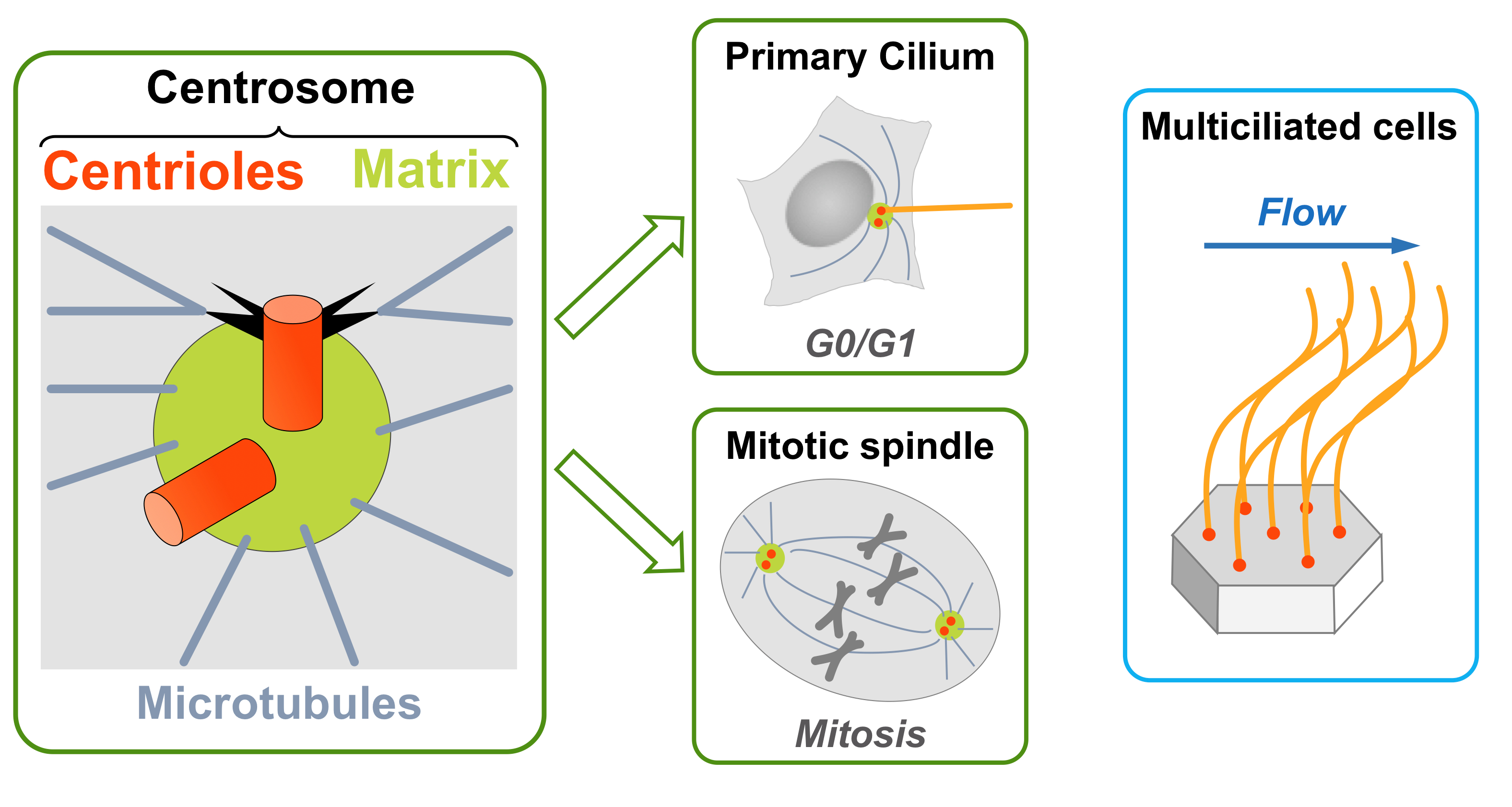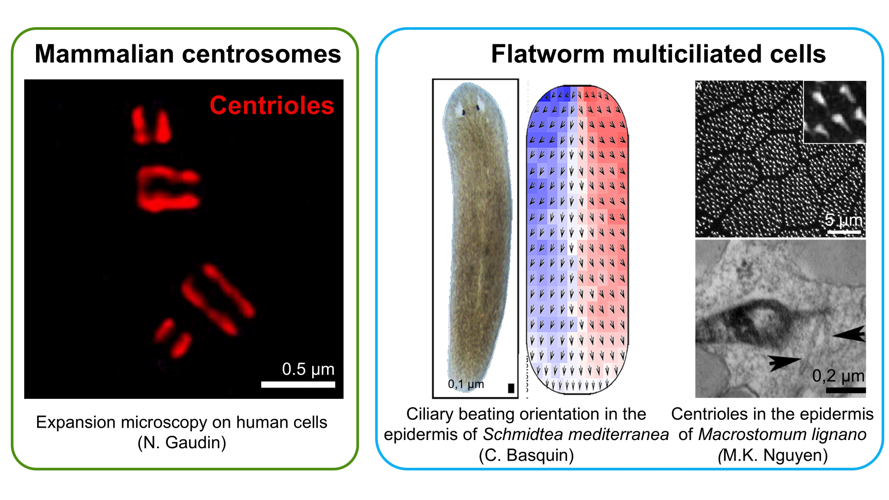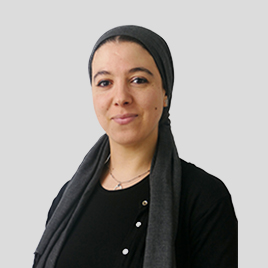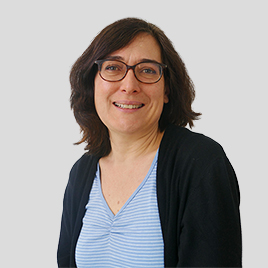Biogenesis and polarity of centrioles and cilia
Juliette AZIMZADEH
Our aims are:
- to understand molecular mechanisms underlying the assembly of centrioles and cilia;
- to understand how centrioles and cilia are positioned within the cell in response to morphogenetic signals in multiciliated cells.
Key-words: cytoskeleton, centriole, centrosome, cilium, ciliopathies, planar cell polarity
+33 (0)1 57 27 81 13 Contact @azimzadeh-lab.bsky.social
Centrioles are small cylindrical structures that form the core of the centrosome, the main organizer of the microtubule cytoskeleton in animal cells. The centrosome duplicates at each cell cycle and the two resulting centrosomes trigger the assembly of the mitotic spindle during cell division. During interphase, the centrosome participates to the regulation of cell cycle progression and cell polarity. The centrosome can also migrate to the cell periphery where one of the centrioles nucleates the assembly of the primary cilium, a cellular antenna involved in major signaling cascades. In contrast, multiciliated cells form up to several hundred motile cilia, which beat in a coordinated fashion to generate a flow of liquid or to displace particles and cells. For instance, multiciliated cells are needed for respiratory clearance, a mechanism that renews the protective mucus barrier protecting the lungs from pathogens and dust.

Alterations of centriole number or structure, or of cilium formation, can trigger cancer transformation and tumor progression. In addition, mutations in genes coding for components of cilia and centrioles are found in genetic pathologies associated to a wide variety of clinical features, called ciliopathies. This points to the importance of understanding how these organelles are assembled and fulfill their functions.
- Our first project aims at understanding molecular mechanisms underlying the assembly of centrioles and cilia. For this, we use human and mouse cell lines and a combination of genetic, biochemical and imaging techniques, including electron and expansion microscopy.

- Our second aim is to understand how centrioles and cilia are positioned within the cell in response to morphogenetic signals in multiciliated cells. For this, we use two species of flatworms as model systems, as these animals use multiciliated epidermal cells for their locomotion.
Members





To contact a member of the team by e-mail: name.surname@ijm.fr
- Gaudin N., Martin Gil P., Boumendjel M., Ershov D., Pioche-Durieu C., Bouix M., Delobelle Q., Maniscalco L., Phan T.B.N., Heyer V., Reina-San-Martin B., Azimzadeh J. (2021). Evolutionary conservation of centriole rotational asymmetry in the human centrosome. bioRxiv. 2021.07.21.453218.
- Azimzadeh, J. (2021). Evolution of the centrosome, from the periphery to the center. Current Opinion in Structural Biology. 66:96–103. doi:10.1016/j.sbi.2020.10.020.
- Le Guennec M., Klena N., Gambarotto D., Laporte M., Tassin A.M., van den Hoek H., Erdmann P.S., Schaffer M., Kovacik L., Borgers S., Goldie K.N., Stahlberg H., Bornens M., Azimzadeh J., Engel B., Hamel V., Guichard P. (2020). A helical inner scaffold provides a structural basis for centriole cohesion. Science advances, Vol. 6, no. 7, eaaz4137. doi: 10.1126/sciadv.aaz4137.
- Pizon V., Gaudin N., Poteau M., Cifuentes-Diaz C., Demdou R., Heyer V., Reina San Martin B., Azimzadeh J. (2020). hVFL3/CCDC61 is a component of mother centriole subdistal appendages required for centrosome cohesion and positioning. Biology of the Cell, 112(1):22-37. doi:10.1111/boc.201900038.
- Basquin C., Ershov D., Gaudin N., Vu H.T.K., Louis B., Papon J.F., Orfila A.M., Mansour S., Rink J.C., Azimzadeh J. (2019). Emergence of a bilaterally symmetric pattern from chiral components in the planarian epidermis. Developmental.Cell, 51:516-25. doi:10.1016/j.devcel.2019.10.021.
Publications
Reviews
Book chapter
Noémie Gaudin, « Etude des mécanismes associés à la polarité rotationnelle des centrioles dans les cellules animales », soutenue le 21 septembre 2021.
- Claire Wyart (Institut du Cerveau, Paris)
- Christophe Leterrier (Institut de Neurophysiopathologie, Marseille)
- Takashi Ochi (University of Leeds)
- ANR
- ARC
- Labex Who Am I?



